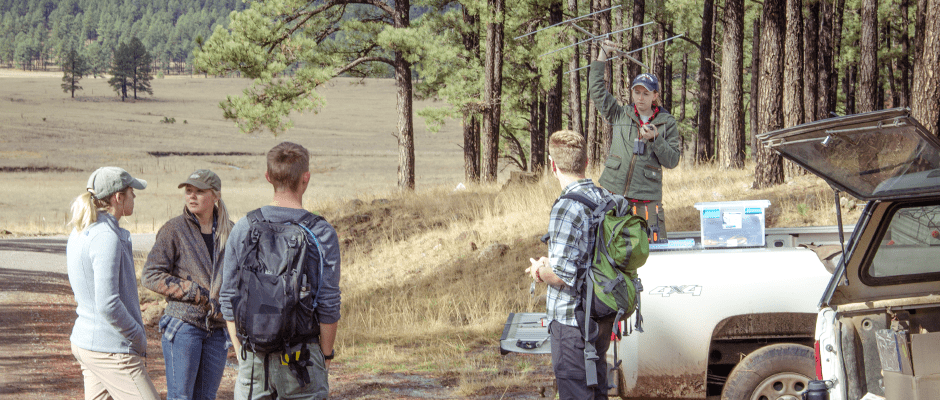Share this article
Students produce video about gray fox work
University of Arizona students are taking viewers on a virtual field work expedition to watch a graduate student uncover the home ranges and habitat selection of gray foxes (Urocyon cinereoargenteus) in the Southwest.
Corey Shaw, a wildlife management and conservation undergraduate, created the video to show other students what it takes to be a wildlife conservation biologist.
“I want to work to understand conservation science as best as I can to become an effective communicator and a bridge from the scientific community to the public,” said Shaw, a member of U of A’s TWS student chapter, who is blending six years of video production experience with his wildlife studies.
Shaw paired with Amanda Veals, a master’s student working on a gray fox project, and shadowed her on her field work. Veals was using traps and radio telemetry to locate foxes and determine their home ranges and movement in order to inform rabies prevention. Last year Arizona saw about 17 cases of rabies in gray foxes, which carry a unique strain of the rabies virus in the state.
Gray foxes in the western U.S. are relatively understudied, Veals said.
“My adviser and I were approached by USDA Wildlife Services to collaborate and help fund a project because they were interested in the same spatial ecology questions in order to improve rabies management in Arizona,” she said.
Shaw left their first outing frustrated. A three-day trip to the White Mountains turned up no foxes.
“It was tough,” he said, “because without a fox, it would be hard to produce a final video.”
The next trip, trekking through snow to Mount Graham in January, was also looking bleak, but in the second-to-last trap the team checked, Veals caught a fox. Shaw’s camera battery died, but he managed to capture the footage of the fox. “It was harrowing but we got it,” he said. “It turned out pretty great.”
Veals said she hopes projects like this one will make undergraduate students aware of graduate student projects they can assist with. “I was really happy to help Corey out with something so unique and interesting,” she said.
Shaw hopes the video helps raise awareness about what conservation looks like and provides a face and story for those efforts.
“I hope it can provide students with ideas and inspiration to make the most of their studies and get involved in their student chapters and build relationships with graduate students doing research,” he said.
He plans to make a career out of using video to influence wildlife conservation and is actively seeking a master’s program where he can combine communication and conservation.
“I feel like video has the ability to provide the public with a visceral experience when it’s done well,” he said. “I really want to use video to reach, inspire and engage the public to understand what conservation is and more importantly, to tackle those tough questions.”
Shaw will be speaking at this year’s annual TWS conference in New Mexico about conservation communication and how biologists can use video to engage the public. Veals will also be presenting her gray fox research at the TWS conference.
Watch his video about Veals’ research on gray foxes below.
Header Image: Amanda Veals performs radio telemetry with the help of undergraduate students as part of her gray fox research. ©Corey Shaw








